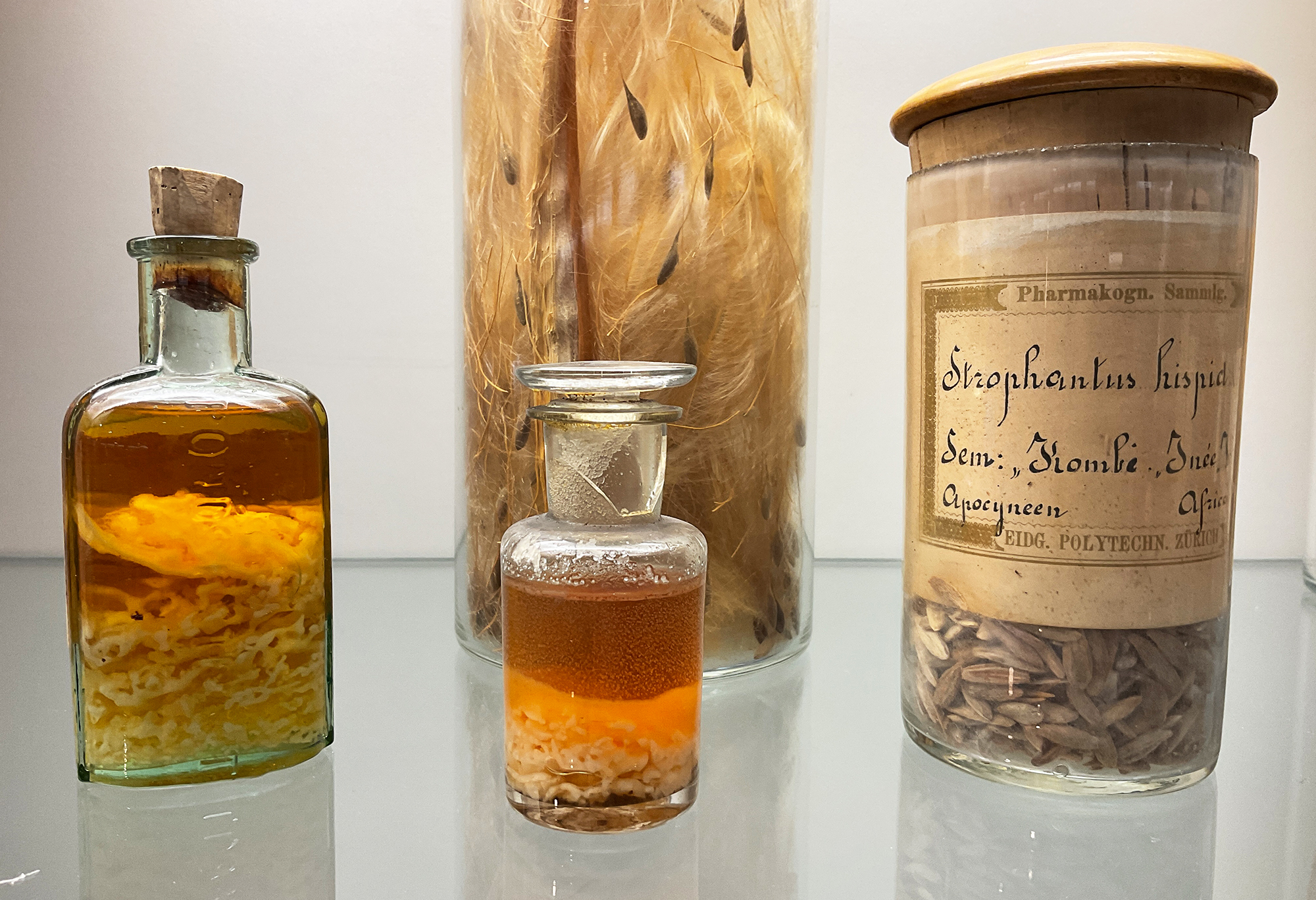Herbal arrow poisons as hunting weapons
Strophantus, Adenium or Chondrodendron species are not only pretty to look at. The plants can also be used as poisonous, efficient hunting tools.

The use of bow and arrow represents a landmark in the development of human culture. Hunting (or defense) with it became all the more efficient when the tips were soaked in poison – of both animal, and plant origin. The poisons are obtained by various treatment of the plants (or plant parts). Collecting the poison is often connected with ritual actions. Besides plants, animals were and are also used to produce arrow poisons.
Western medicine still uses plant ingredients that were originally used for arrow poisons, e.g. strophantine from Strophantus sp,and tubocurarine from Condrodenrum sp. In earlier times, these natural products were highly important in medicine, but they have now been replaced by the discovery of new drugs and by the development of vascular and cardiac surgery.

Deadly poisons and cures
Adenium species (desert rose): They contain cardenolides in their milky sap. This poison is popular in Africa for hunting big game because it kills quickly.
Strophantus species also have cardenolides. They were used in Central Africa as arrow poisons, later in the 19th-20th century it was recognized that the active ingredient was a glycoside, which could be used to treat heart problems.

Strychnos species (nuts): Strychnos castellanii can be found in the Amazon region of Peru, Brazil and Colombia and contains curare. This substance is a muscle relaxant and is used both as an arrow poison and in medicine. Strychnos ignatii from Southeast Asia, in turn, mainly contains strychnine, which is used as a poison as well as a tonic for exhaustion.
Chondrodendron species (cartilage tree): widespread in South to Central America. They have a high alkaloid content. The main active ingredient is D-tubocurarine (a component of curare), used as an arrow poison and a muscle relaxant in medicine.